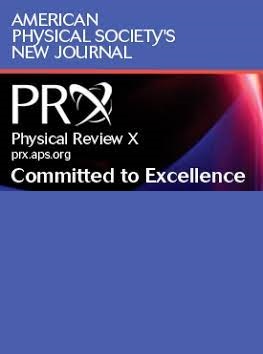铜阶梯中的超哈伯德配对
IF 15.7
1区 物理与天体物理
Q1 PHYSICS, MULTIDISCIPLINARY
引用次数: 0
摘要
哈伯德模型被认为抓住了铜超导体的基本物理特性。然而,最近的理论研究表明,它不能再现一个稳健和均匀的超导基态。通过共振非弹性x射线散射和密度矩阵重整化群计算,我们发现原型铜阶梯Sr14Cu24O41中的磁激发与简单Hubbard模型中的磁激发不一致。空穴载流子的磁响应,有助于自旋翻转激发的一个紧急分支,被强烈抑制。这种效应是强d波配对的结果,通过一个大的近邻吸引相互作用增强了近一个数量级,并持续到至少260 K。铜阶梯的物理性质与二维化合物的物理性质之间的密切联系表明,这种增强的空穴配对可能是超导铜酸盐的普遍特征。2025年由美国物理学会出版本文章由计算机程序翻译,如有差异,请以英文原文为准。
Beyond-Hubbard Pairing in a Cuprate Ladder
The Hubbard model is believed to capture the essential physics of cuprate superconductors. However, recent theoretical studies suggest that it fails to reproduce a robust and homogeneous superconducting ground state. Here, using resonant inelastic x-ray scattering and density matrix renormalization group calculations, we show that magnetic excitations in the prototypical cuprate ladder Sr14Cu24O41 are inconsistent with those of a simple Hubbard model. The magnetic response of hole carriers, contributing to an emergent branch of spin-flip excitations, is strongly suppressed. This effect is the consequence of strong d Published by the American Physical Society 2025
求助全文
通过发布文献求助,成功后即可免费获取论文全文。
去求助
来源期刊

Physical Review X
PHYSICS, MULTIDISCIPLINARY-
CiteScore
24.60
自引率
1.60%
发文量
197
审稿时长
3 months
期刊介绍:
Physical Review X (PRX) stands as an exclusively online, fully open-access journal, emphasizing innovation, quality, and enduring impact in the scientific content it disseminates. Devoted to showcasing a curated selection of papers from pure, applied, and interdisciplinary physics, PRX aims to feature work with the potential to shape current and future research while leaving a lasting and profound impact in their respective fields. Encompassing the entire spectrum of physics subject areas, PRX places a special focus on groundbreaking interdisciplinary research with broad-reaching influence.
 求助内容:
求助内容: 应助结果提醒方式:
应助结果提醒方式:


